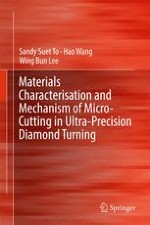2018 | OriginalPaper | Chapter
10. Dynamic Modelling of Shear Band Formation and Tool-Tip Vibration in Ultra-Precision Diamond Turning
Authors : Sandy Suet To, Victor Hao Wang, Wing Bun Lee
Published in: Materials Characterisation and Mechanism of Micro-Cutting in Ultra-Precision Diamond Turning
Publisher: Springer Berlin Heidelberg
Activate our intelligent search to find suitable subject content or patents.
Select sections of text to find matching patents with Artificial Intelligence. powered by
Select sections of text to find additional relevant content using AI-assisted search. powered by
